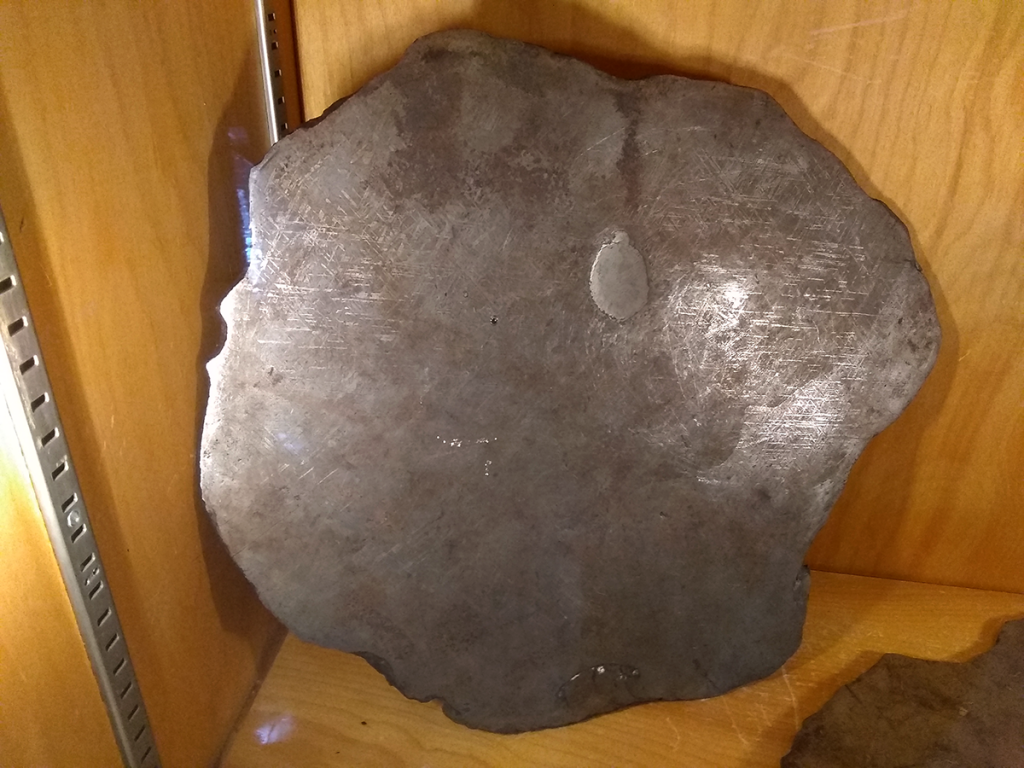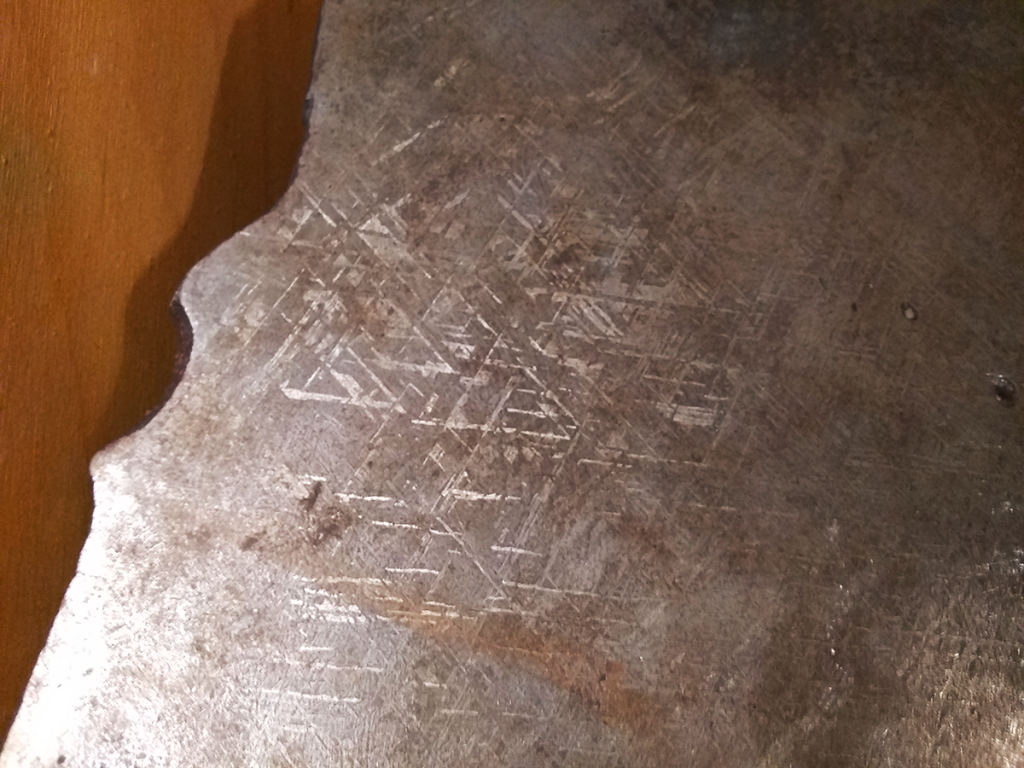
Meteorites – those shooting stars which don’t completely burn up entering our atmosphere and then crash to the ground – can be made of all sorts of stuff. The most commonly found in museums and collections are metallic, not because they’re the most frequent type of meteorite, but because they’re the most likely both to survive entry/impact and to be discovered. A stony meteorite might look remarkably like an ordinary rock. A big chunk of warped iron just sitting on the ground? Slightly more conspicuous.
We have a few meteorites and pieces of meteorites on display, including this big slab. Cut, polished, and given an acid treatment, it shows off its internal crystalline structure. Primarily iron and nickel in two different crystalline shapes, it has a characteristic pattern known as a Widmanstätten pattern. Given a sufficiently long cooling period to enable crystal formation – typically on the order of millions of years – it produces this distinct appearance that highlights its extraterrestrial provenance.
Can’t do this stuff in a lab is what we’re saying.
The acid-etching process enhances the pattern where the high-nickel taenite alloy is more resistant to the acid than the low-nickel kamacite, turning a smooth, polished surface into one that looks, well, really cool.
